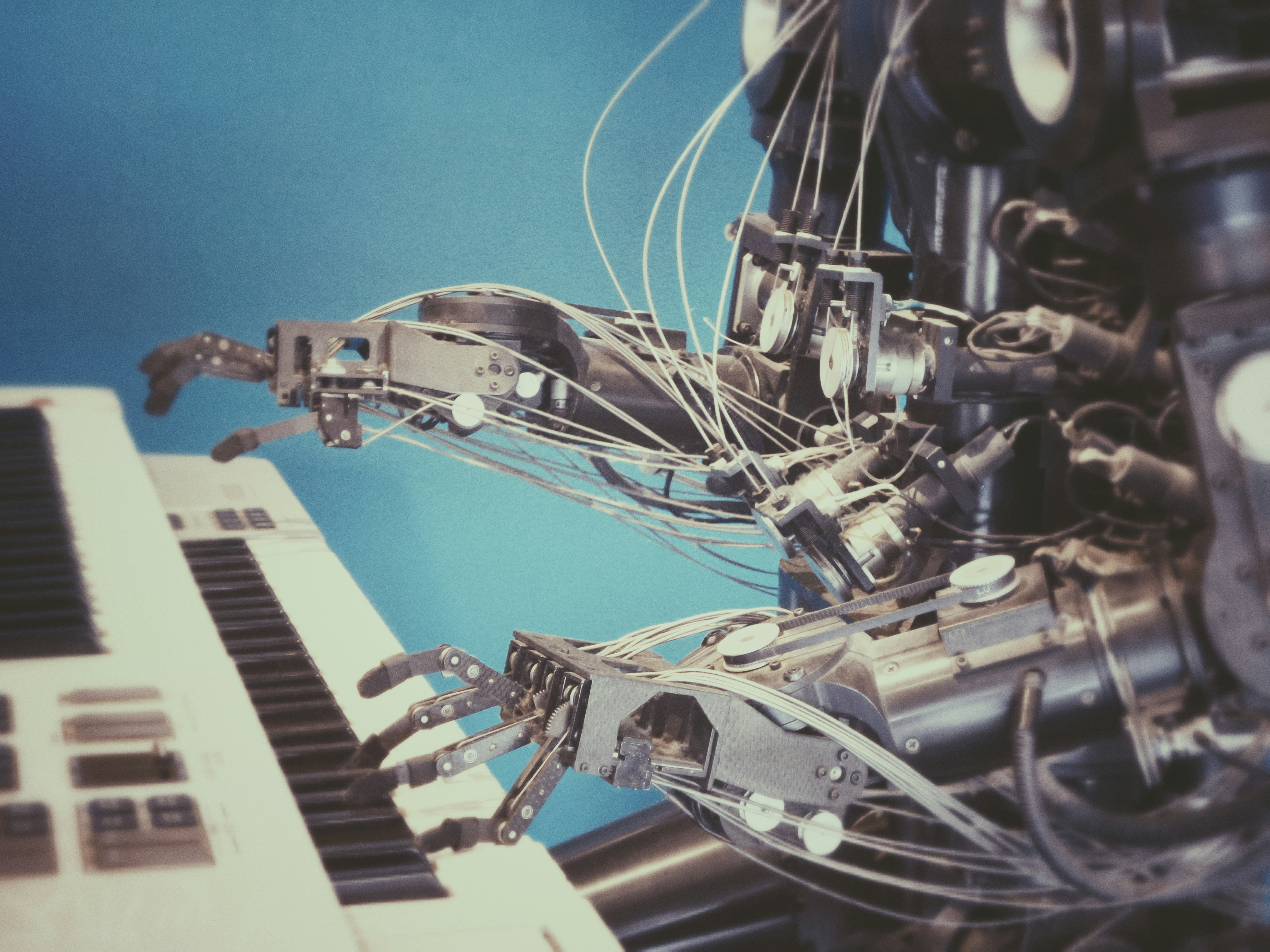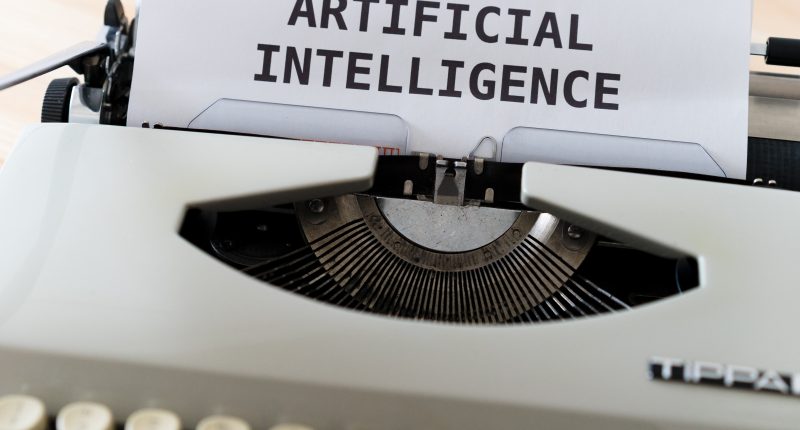A look at “Understanding Artificial Intelligence in the Workplace” Artificial Intelligence (AI) is revolutionizing the world we live in, and the workplace is no exception. From chatbots to predictive analytics, AI is helping organizations become more efficient and productive than ever before. But with this new technology comes a lot of questions: How does it work? What are its limitations? And what impact will it have on our jobs? In this blog post, we’ll take a deep dive into understanding AI in the workplace – demystifying its applications and exploring how it’s transforming industries across the board. So whether you’re an employee interested in learning how AI can enhance your work experience or an employer looking to implement these technologies, read on for all you need to know about artificial intelligence at work!

See Also: Fatigue and Weakness In Children | Care Instruction
What is Artificial Intelligence?
Artificial intelligence (AI) is a branch of computer science that deals with the creation of intelligent agents, which are systems that can reason, learn, and act autonomously. AI research deals with the question of how to create computers that are capable of intelligent behaviour.
In practical terms, AI applications can be deployed in a number of ways, including:
1. Machine learning: This is a method of teaching computers to learn from data, without being explicitly programmed.
2. Natural language processing: This involves teaching computers to understand human language and respond in a way that is natural for humans.
3. Robotics: This involves the use of robots to carry out tasks that would otherwise be difficult or impossible for humans to do.
4. Predictive analytics: This is a method of using artificial intelligence to make predictions about future events, trends, and behaviours.
5. Computer vision: This involves teaching computers to recognize visual patterns and objects in images and videos.
Overall, AI can be used in a variety of domains to enable machines to think and act more intelligently.
The different types of Artificial Intelligence
There are three main types of Artificial Intelligence (AI): narrow or weak AI, general AI, and super AI.
Narrow or weak AI is the type of AI that is most commonly used today. Narrow AI is designed to perform a specific task, such as playing a game or driving a car. General AI is designed to perform any task that a human being can do. Super AI is designed to be smarter than any human being.
AI can also be classified by how it is used. Some common applications of AI include:
- Machine learning: This is a method of teaching computers to learn from data, without being explicitly programmed.
- Natural language processing: This involves teaching computers to understand human language and respond in a way that is natural for humans.
- Robotics: This involves using robots to carry out tasks that would otherwise be difficult or impossible for humans to do.
The history of Artificial Intelligence in the workplace
Artificial intelligence has been present in the workplace for many years, but its use has been limited to certain tasks. With the recent advances in AI technology, however, AI is beginning to play a more significant role in the workplace.
AI first began to be used in the workplace in the 1950s, when it was used for simple tasks such as data entry and retrieval. However, AI really began to take off in the 1980s, when it was used for more complex tasks such as knowledge engineering and expert systems. In the 1990s, AI was used for even more complex tasks such as natural language processing and machine learning.
Today, AI is being used for a variety of tasks in the workplace, including customer service, sales, marketing, finance, and human resources. With the continued advances in AI technology, we can only expect AI to play an even more significant role in the workplace of the future.
Also Read: 11 Side Effects of Garden Egg Leaves On Humans: Uses And Benefits
How Artificial Intelligence is used in the workplace today
AI technology is used in workplaces today to carry out various tasks. These include:
1. Automating repetitive and low-level tasks: Many organizations use AI to automate simple and routine tasks such as data entry, appointment scheduling, and email responses. This frees up employees’ time so they can focus on more important work.
2. Enhancing customer service: AI is being used to create “chatbots” that can communicate with customers on behalf of businesses. These chatbots are often used to provide answers to common questions or direct customers to the right human agent if they need more help.
3. Improving decision making: AI systems can analyze large amounts of data much faster than humans can. This makes them very useful for spotting trends and helping organizations make better decisions. For example, hospitals are using AI to predict which patients are most likely to develop certain diseases so they can be treated early on.
4. Helping with recruiting: AI is being used by some companies to screen job applicants and identify the most qualified candidates for open positions.
5. Increasing safety: AI is being used to monitor environments and detect potential hazards before they become a problem. For example, some factories use AI to watch out for unsafe conditions or behavior on the production floor.
6. Supporting human resources: AI can be used to create a “human resources database” that contains information about all employees in an organization. This can be used to track employee performance and make decisions about promotions and layoffs.
7. Improving security: AI systems can identify suspicious activity that might otherwise go unnoticed. They are also being used to detect cyber threats and protect confidential data.
8. Boosting productivity: AI can automate mundane tasks, freeing up employees to focus on more productive work. It can also help organizations analyze large amounts of data to find insights that can improve operations.
Overall, AI is being used in a variety of ways to streamline operations, improve customer service, and increase safety and security. It’s also helping organizations make better decisions and boost productivity.
The benefits of Artificial Intelligence in the workplace
Artificial intelligence (AI) can help businesses automate tasks, improve decision making and boost efficiency. Here are some specific benefits of AI in the workplace:
1. Automation of repetitive tasks: AI can automate repetitive and low-level tasks, such as data entry, freeing up employees to focus on more challenging and interesting work.
2. Improved decision making: AI can help managers make better decisions by analyzing large amounts of data quickly and accurately. For example, an AI system might be used to identify patterns in customer behavior or to predict demand for a product.
3. Boosted efficiency: By automating tasks and improving decision-making, AI can help businesses become more efficient and productive.
4. Reduced costs: Automating tasks can help businesses save money on labor costs. In addition, AI-powered decision-making can help businesses avoid costly mistakes.
5. Improved customer satisfaction: By automating tasks and improving decision-making, AI can help businesses deliver better customer service and satisfaction levels.
The challenges of Artificial Intelligence in the workplace
The challenges of Artificial Intelligence in the workplace are many and varied. One challenge is that AI can create a competitive advantage for companies that embrace it, while those that don’t may find themselves at a disadvantage. Additionally, AI can automate tasks that may lead to job loss and disrupt entire industries. It is important to consider these challenges when implementing AI in the workplace.
Impact on Robots
AI is not only changing the nature of work for humans but also for robots. As AI becomes more advanced, robots will become more sophisticated and intelligent. AI-powered robots can learn from their environment, analyze data, and make decisions based on that data. This makes them more efficient and reliable.
AI-powered robots are already being used in manufacturing and logistics, but their potential is vast. Robots could be used in hazardous environments, such as mining, where it is unsafe for humans to work. They could also be used in space exploration, where humans cannot survive.
The future of Artificial Intelligence in the workplace
The future of Artificial Intelligence (AI) in the workplace is shrouded in potential but fraught with uncertainty. Many experts believe that AI will result in massive job losses as automation increasingly replaces human workers across a variety of industries. Other observers contend that AI will create new opportunities for humans to augment their work with intelligent machines.
The truth is likely to fall somewhere in between these two extremes. It is certain that AI will have a profound impact on the workplace, but the extent and nature of that impact is difficult to predict. What is clear is that businesses and workers must adapt to the changing landscape of work in the age of AI.
AI has already begun to transform various aspects of work, from customer service to data analysis. As AI technology continues to evolve, its impact on the workplace will only become more pronounced. Businesses must be prepared to embrace AI-powered automation or risk being left behind by their more nimble competitors.
At the same time, workers must be prepared to upskill themselves to remain competitive in an increasingly automated labor market. Those who are able to adapt and learn new skills will find themselves in high demand in the coming years. The future of work is uncertain, but those who are prepared for it will be well-positioned for success.
See Also:
Conclusion
AI in the workplace can provide many benefits such as increased efficiency, cost savings, and improved customer experiences. However, businesses should be aware of potential drawbacks like job displacement and privacy risks. It is important to understand how AI works and what the associated risks are so that organizations can make informed decisions on their use of AI technologies. By taking a thoughtful and intentional approach to incorporating artificial intelligence into their operations, businesses will be able to leverage its full potential while minimizing risk.
Continue to check our website for more articles of this kind. And, please use our comment section as well, we would love to hear from you.
Last Updated on March 13, 2023 by 247 News Around The World






